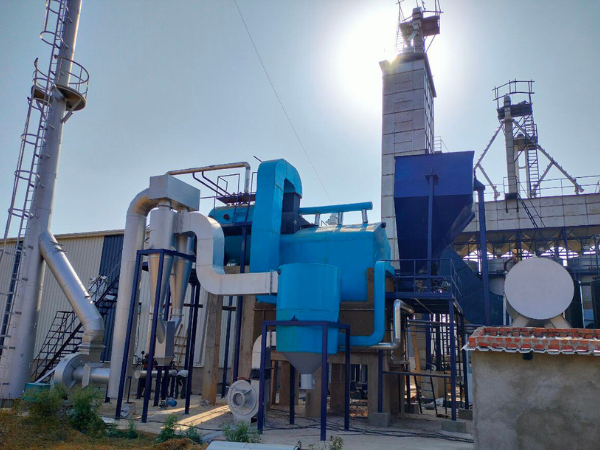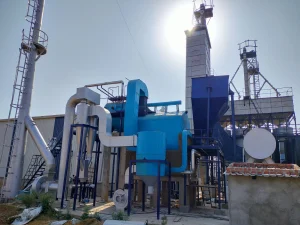Combi Boiler: Hybrid Design for Superior Efficiency and Fuel Flexibility
Combi Boiler -Combitherm
Our Combitherm boiler, also known as Combi boiler or Combination boiler, features a unique design that combines elements of both water tube and smoke tube boilers. In this innovative system, some tubes form an enclosed external furnace where water flows, while the remaining tubes are housed within a shell where flue gases pass.
In a combi boiler the furnace, enclosed on five sides by water tubes, acts as a high-temperature zone, facilitating significant radiation heat transfer. Conversely, convection heat transfer occurs within the shell, where water surrounds tubes carrying high-velocity flue gases.
Furthermore, the membrane tube design in Combi boilers minimizes environmental heat loss. These tubes also offer a substantial heat transfer area, enhancing radiation heat transfer. The shell, designed for two passes, increases the residence time of gases while maintaining optimal velocity for efficient convective heat transfer. Both the shell and water wall tubes contribute to large water and steam holding capacities, maximizing operational benefits.
- Available in capacities from 1 TPH to 20 TPH for industrial steam needs.
- All Biomass fuels, Rice husk, Briquettes, Coal, Agro-waste, Wood & wood chips
- Manual
- Fluidised Bed Combustion
- Automatic feeding
- Rice mills, Distillery, Paper, Food processing, Chemicals, Rubber, Dairy, Textiles, and others
- Fuel Flexibility: It can operate on a wide range of fuels, including agro-waste, providing significant operational flexibility.
- Hybrid Design: Combining the strengths of both water tube and smoke tube designs, it delivers enhanced performance.
- High Efficiency: Users benefit from high thermal efficiency and consequently, low operating costs.
- Cost-Effective Installation: With minimal on-site work required, installation costs are kept low.
- Exceptional Reliability: The equipment boasts a high degree of reliability, ensuring consistent operation.
- Dependable Components: All critical components, such as valves, pumps, safety devices, and instruments, are of dependable quality.
- High Heat Recovery: Boiler system is designed at 85% thermal efficiency with boiler and APH. For even greater efficiency, a pressurized economizer or a Pressurized condensate recovery system can be paired with the model.
- Simplified Maintenance: Easy access points facilitate straightforward cleaning and inspection.
Combi boiler Combitherm related FAQs-
A 3 pass boiler allows flue gases to pass through the boiler shell three times, improving heat transfer and fuel efficiency. This design ensures better combustion, lower fuel consumption, and higher steam output—ideal for industrial applications.
A combination boiler, or combi boiler, is a multi-fuel boiler that uses two different fuels—typically solid fuel and oil or gas—for steam generation. It offers fuel flexibility, higher efficiency, and uninterrupted operation, making it ideal for industries with variable fuel availability.
A combination boiler can run on multiple types of solid fuels such as coal, wood, briquettes, wood chips, and agro-waste. This flexibility allows industries to optimize fuel costs and ensure continuous operation based on fuel availability.
Thermodyne manufactures combi boilers—both Combitherm and Combitherm Ultra—in steam capacities ranging from 1 TPH to 20 TPH, designed to operate on various solid fuels with working pressures between 10.5 and 32 kg/cm².
Runs on multiple solid fuels like agro-waste.
Combines water tube and smoke tube design.
Offers 82% thermal efficiency.
Low installation cost with minimal site work.
Uses reliable, high-quality components.
Easy to clean and maintain.
Suggested Products
Book a free Consultation
Fill in the form below to book a 30 min no-obligation consulting session.

Book A Meeting Online
Let's talk! Book your online consultation now and get personalized advice from our experts-wherever you are, whenever you're ready.













